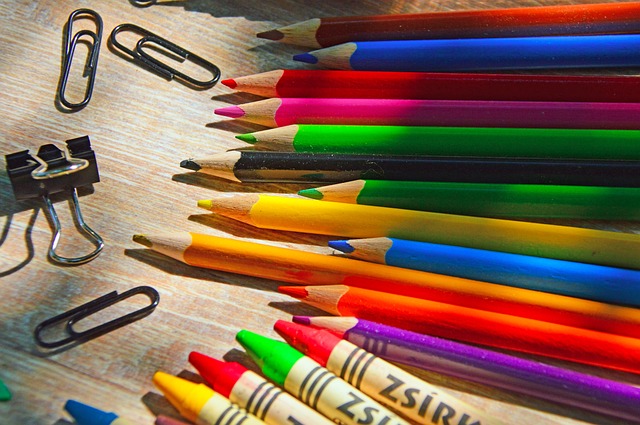
excitement, anxiety, and anticipation. Parents often focus on buying new clothes, filling backpacks with supplies, and snapping that perfect “first day” photo. But beyond the traditional checklist, there are deeper, more essential needs that help children transition successfully and happily into the school year. This article dives into what children truly need on their first day back to school—beyond the pencils and paper.
1. Emotional Readiness and Reassurance
One of the most overlooked aspects of preparing for back-to-school is emotional support. Children, especially younger ones or those transitioning to a new school or grade level, may feel nervous or uncertain.
How Parents Can Help:
- Talk Openly: Have conversations about what school will be like. Encourage your child to express any fears or concerns.
- Reassure Them: Let them know it’s normal to feel anxious. Share your own memories of the first day of school to create relatability.
- Create a Positive Narrative: Focus on the fun parts—seeing friends, learning new things, trying new activities.
- Practice Separation: For younger children, practice brief separations to help ease the anxiety of being apart during school hours.
Key Tip: Establish a comforting morning routine that includes positive affirmations and extra cuddles or words of encouragement.
2. Basic School Supplies — But Thoughtfully Bought
While school supply shopping is often seen as a ritual, what children really need is a set of essentials tailored to their actual use and developmental stage. Too many supplies can overwhelm, while too few can leave them unprepared.
Essential Items Include:
- Notebooks and folders (organized by subject)
- Writing utensils (pencils, pens, highlighters)
- Choose from kids’ backpacks and ensure that it fits comfortably
- Lunchbox and water bottle
- Art supplies if required (crayons, markers, glue)
Why Thoughtfulness Matters:
Buying items in your child’s favorite color or with their favorite characters can boost their enthusiasm. Also, involve them in the shopping process to build ownership and responsibility.
3. A Good Night’s Sleep and Rested Start
Sleep is the cornerstone of a productive school day. Children who return to school without adequate rest are more prone to emotional outbursts, low concentration, and fatigue.
Recommended Sleep Durations:
- Ages 6–13: 9 to 11 hours
- Teens: 8 to 10 hours
Back-to-School Sleep Tips:
- Start the school sleep routine 1–2 weeks in advance.
- Limit screen time at least one hour before bed.
- Create a calming bedtime ritual (reading, warm bath, soft music).
- Set consistent wake-up and bedtime schedules, even on weekends.
4. Nutritious Breakfast and Healthy Lunch
Food is fuel for the brain. Skipping breakfast or relying on sugary snacks can cause dips in energy and focus.
Ideal First Day Meals:
- Breakfast: Protein (eggs, yogurt, peanut butter), complex carbs (whole-grain toast or oats), and fruit.
- Lunch: A balance of protein, veggies, and grains; avoid overly processed items.
- Snacks: Trail mix, sliced fruits, or granola bars that provide sustained energy.
Encourage hydration with water throughout the day, and teach kids the importance of finishing their meals, especially during those nerve-wracking first days.
5. Understanding the School Environment
A child’s confidence grows when they know what to expect. Familiarity with the school environment eases transitions and builds comfort.
What Helps:
- Attend Orientation: Meet teachers, see classrooms, and locate bathrooms.
- Walk the Route: Whether it’s by bus, carpool, or walking, do a trial run.
- Visual Aids: For younger kids, a visual schedule of the school day can help them feel more in control.
Knowing where to go, who to ask for help, and what to expect in their daily routine helps reduce first-day jitters.
6. Supportive Communication Tools
For many children, especially in today’s tech-driven environment, a way to connect with parents (if allowed by the school) can be comforting.
- For older kids, a simple phone with limited capabilities can be used to text or call after school.
- For younger children, sending a handwritten note in their lunchbox can make them feel emotionally connected.
Ensure children know who their emergency contacts are and how to reach them, reinforcing safety and confidence.
7. Social Preparation
Peer relationships are a huge part of the school experience. Helping your child prepare socially can set the stage for positive interactions.
Preparation Ideas:
- Arrange playdates or meetups before school starts.
- Practice social scenarios: greetings, asking to join a game, or introducing themselves.
- Remind children of inclusive behavior and kindness.
- Talk about bullying—what it is, and who to speak to if they experience or witness it.
Fostering empathy, emotional intelligence, and basic communication skills can ease social transitions and help kids build friendships quickly.
8. Clear Expectations and Goals
Children thrive with structure. When they understand what’s expected of them—academically, behaviorally, and socially—they are more likely to succeed.
Start With:
- A discussion on rules and routines (homework time, screen time, bedtime)
- Goal setting for the year (learning a new skill, improving reading levels)
- Expectations around respect, effort, and attitude
Keep the conversation positive. Celebrate small wins to keep motivation high.
9. Comfortable, Functional Clothing and Footwear
While fashion may seem like a superficial aspect of school prep, comfort plays a huge role in a child’s ability to focus and participate.
Clothing Checklist:
- Weather-appropriate layers
- Easy to manage (especially for younger children)
- School dress-code compliant
- Comfortable shoes for play, like Lo Pro sneakers
Let children choose outfits within a set of options to express autonomy without stress.
10. A Sense of Safety and Belonging
Perhaps the most profound need on the first day back is the feeling of being safe, seen, and supported.
Build This by:
- Affirming their feelings and encouraging open dialogue
- Ensuring that teachers are aware of any medical, emotional, or behavioral needs
- Repeating affirmations like “You’ve got this!” or “I believe in you!”
- Cultivating a morning goodbye ritual like a special handshake or note
Children who feel emotionally safe and supported are more resilient and adaptable, even in unfamiliar environments.
Final Thoughts: Beyond the Backpack
Going back to school is more than a day marked on the calendar—it’s a major transition. While backpacks, binders, and back-to-school sales get the spotlight, what children really need is thoughtful preparation that nurtures their minds, hearts, and bodies.
A successful first day doesn’t hinge on having every item perfectly packed. It hinges on children feeling confident, well-rested, emotionally supported, and socially ready. When we equip our kids with these invisible yet powerful tools, we don’t just set them up for a good first day—we set them up for a successful, enriching school year.


